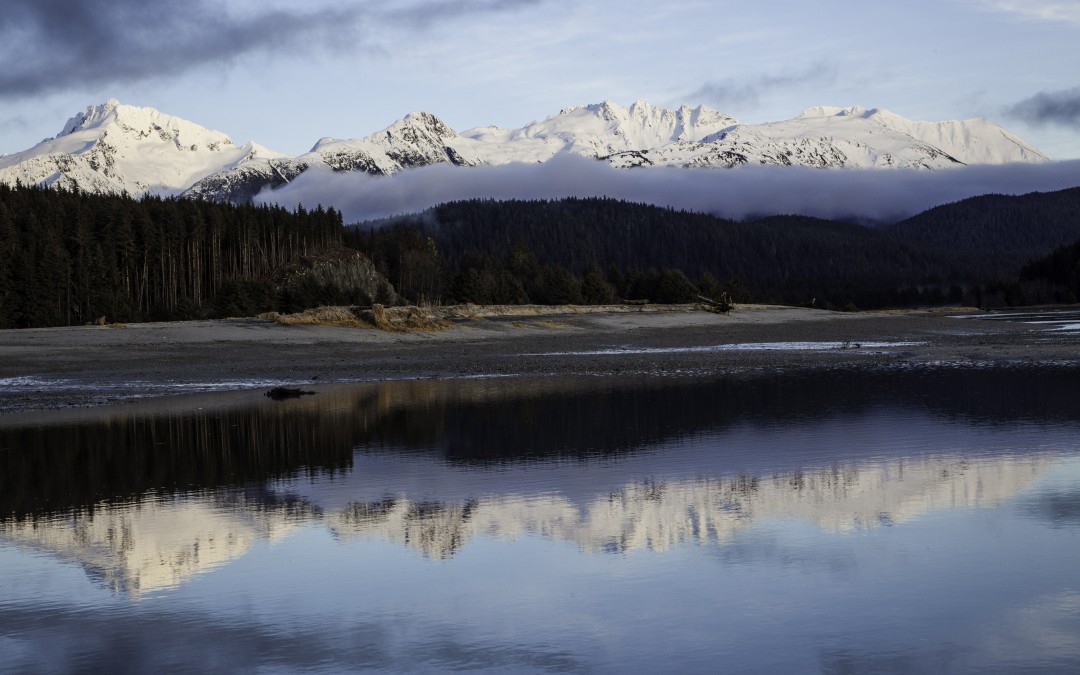“Too painfully beautiful”
I never quite understood this phrase.? We equate beauty with grace, awe, and all around good feelings. How could beauty be painful?? Then I arrived in Juneau.
Pain is a general sensation and one that is comprised of a myriad of unique experiences.? It is neither good nor bad.? As the spectrum of my experience expanded with the vastness of Alaska, so did my concept of pain.? Suddenly, pain was all the breath leaving my lungs in an instant when rounding the corner of a trail and perceiving Mendenhall Glacier for the first time.? Pain became tears welling in my eyes as I absorbed the deep blue in the crevasses of the ice.? Pain was felt as my heart burst with the glittering water edged by the snow-capped Chilkats on Eagle Beach.? And the pain was overwhelming as every cell of my body stretched to embrace the pounding water of Nugget Falls cascading over bedrock.
An overwhelm occurs when attempting to hold the energy that is contained in the magnificence of Juneau.? It literally demands a pause: a fluctuation between the momentum of moving through nature and the stillness of breathing it in.? This spectrum became apparent as I trekked through West Glacier Trail with my painting gear in tow and arrived on the peninsula to set up the easel and dive into the paint.? The minute the brush stroked the canvas, I was transported into a place of stillness while the immense energy of the scene swirled about me.? The rush of the place struck my core and the pain of perception hovered behind my eyes.? Focus waned and everything became of blur of vibration.
I have found in many of my small excursions around Juneau that my eyes are unable to focus while peering out over a vista.? The view is so painfully beautiful that my eyes appear to need to shield themselves with a veil of blur.? Exploring Juneau with a camera gave me a wonderful metaphor to work with.? Similar to the pupils of the eyes, the aperture of a camera opens and closes to allow more or less light in.? The amount of light absorbed also affects what comes into focus and what drops out.? Therefore, with a smaller aperture, a condensed hole for less light to emerge through, there exists a greater depth of field, allowing more to be in focus.? The reverse happens with a larger aperture as the lens opens wider to allow more light in and the depth of field becomes shallower, focused on a subject while the rest drops into a blur.? Peering out over a massive vista in Juneau would mean the pupils are at a small aperture, compensating for the amount of light present.? Technically, there should be infinite focus in this moment, allowing all the information to register clearly.? Yet, this is where the overwhelm takes its hold, the peripherals of our eyesight begin to blur, and we succumb to the understanding of ?too painfully beautiful?.?? We are not machines, and this is good.
As my eyes dance with the light of the land, my paintbrush skirts over the canvases in a continuous experiment to decipher the ?too painfully beautiful? of Juneau, Alaska.




